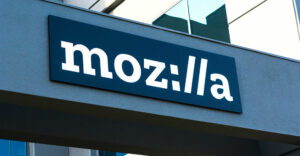To kick off its big JavaOne party for its software developers in San Francisco this week, Sun Microsystems made a flurry of announcements aimed at rekindling enthusiasm for the once high-flying company’s future prospects. But some critics of the Santa Clara, California enterprise remained unimpressed by the festivities.
“At the moment, Sun is sort of thrashing,” declared Eric S. Raymond, president of the Open Source Initiative, a nonprofit open-source computing advocacy group. “I expect the thrashing to continue for a while until they settle on a business model for the future,” he told LinuxInsider.
That business model had better emerge soon, he added. “At their present burn rate, they only have a year left,” he said. “Unless they come up with something pretty dramatic in terms of new products or new positioning, they’re not going to be making any money nine months to a year from now.”
Like many of the major computer makers, hard times beset Sun in 2001 and 2002, forcing it to lay off workers as revenue losses mounted. It has suffered 12 straight quarters of declining revenues. Moreover, its main business lines are being whipsawed in the market.
Commoditization Victim
“What’s happening,” Raymond maintained, “is that 32-bit PCs are commoditizing their hardware business, Linux is commoditizing their software business, and they know that sometime within a year from now, someone in the Java community process — maybe IBM, maybe Hewlett Packard, maybe somebody else — is going to put up an open source reference implementation of Java, at which point they’re going to lose control of the Java market.”
Sun has begun to address some of those problems by producing servers based on low-cost AMD 64-bit processors, actively participating in the open-source community and making moves to establish a presence on the desktop.
Last November, for example, Sun announced a deal with a major Chinese software concern to place its desktop operating system on 200 million Chinese computers. Today, it announced that Allied Irish Bank (AIB), one of Ireland’s largest banking and financial services organizations, will migrate 7,500 desktop users and transition branch-dependent applications across its entire branch network to the Sun Java Desktop System.
Fractured by Factions
Still, Raymond remains skeptical of Sun’s efforts. “I don’t think Sun knows where to turn,” he said. From conversations he’s had with Sun insiders, Raymond painted a picture of a company fractured by factions. “Some want to go the Linux open-source route completely,” he said, “but others are saying, ‘No! No! If we do that, all our profit margins go away and everything that makes us Sun goes away.'”
Both sides are correct, he contended. “Sun can’t survive with its present business model and present product line, and they don’t have any alternative but to become a Linux integration shop.” Sun believes otherwise, especially in light of the tremendous success Java has had outside desktop environments.
“The Java economy is on fire!” declared Sun president and COO Jonathan Schwartz in a statement. “Java powers 1.7 billion devices worldwide, and it’s rapidly accelerating into the cable TV, gaming, ringtone and automotive industries.”
“Five years ago,” he added, “few predicted the impact Java would have on the mobile device industry; today there are 350 million mobile Java phones. Java technology is becoming the de facto standard for the worldwide network, increasing the speed and simplicity with which services are delivered to mobile, consumer and enterprise markets.”
New Announcements
As the company opened the doors to the 2004 JavaOne Conference, it announced:
- a new version of Java touted by Sun as “the most significant enhancement to the Java platform in the technology’s nine-year history,”
- the commercial release of Java Studio Creator, aimed at making development of Java applications easier,
- the creation of a new developer network,
- release of the new Netbean 4.0 platform, and
- the contribution to the open-source community of Project Looking Glass, Sun’s 3D desktop environment, and Java 3D.
“There’s a lot of innovation that happens ion the open-source community and this is a way to grow adoption and take us to the next level,” Peder Ulander, Sun’s director of marketing for the Desktop Solutions Group told LinuxInsider.




















































